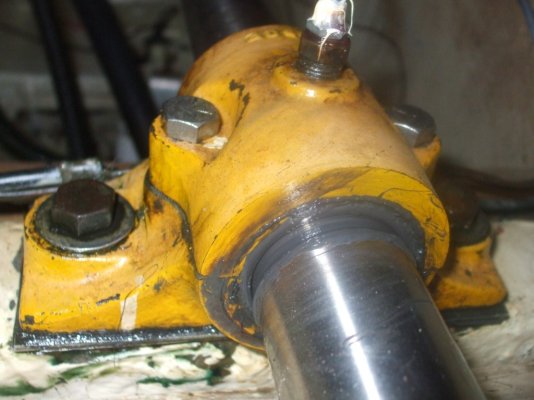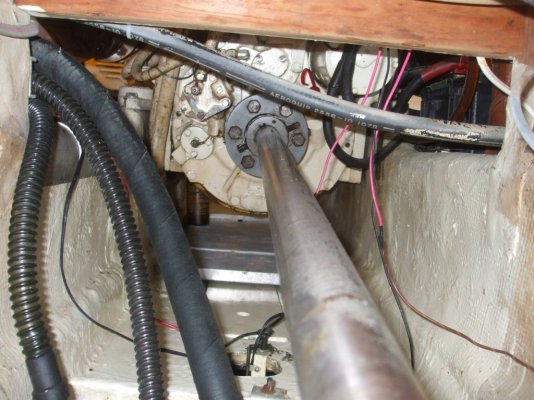BelfastCruiser
Veteran Member
- Joined
- Jan 6, 2011
- Messages
- 66
Hey All! I have my prop off for pitching/polishing and am thinking this would be a great time to "ballpark" align the shaft without the additional prop weight. I've never done it before. Here's where I'm running into myself: the shaft is currently supported through it's 15 ft. run by two (ancient) pillow block bearings. I'm thinking these would need to be removed before I align the shaft. Once aligned, how do I get the bearings right with the shaft and each other? The shaft runs slightly downward and the bearings (see enclosed pix) would need to be aligned to the shaft and each other. *Any iseas/suggestions would be most appreciated. Thanks!


